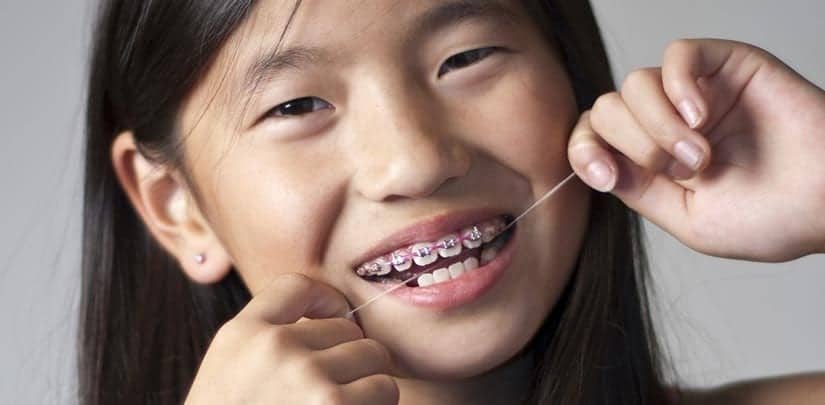Flossing is an essential part of good dental hygiene and Jenkins & LeBlanc are here to help you grow your child’s healthy smile every step of the way!
The American Dental Association recommends flossing between teeth daily. Cleaning between your teeth may help prevent cavities and gum disease. When your child routinely flosses, it helps minimizes a leading cause of tooth decay, known as plaque.
Plaque is a sticky film on the teeth that contains bacteria. Plaque feeds off the foods and sugars in your mouth, releasing an acid that can eat away the enamel of your teeth which causes tooth decay.
However, paired with daily brushing, flossing is an important part of your child’s smile and can greatly help maintain your child’s oral health.
How Can Flossing Help?
Flossing between your teeth can help remove the leftover food that brushing may not be able to reach.
Each tooth has five surfaces to clean, but without flossing you are leaving at least two of those surfaces untouched. Flossing is the only tool that can clean and remove food particles from those spaces in between your teeth and around your gum line where your toothbrush cannot reach.
When Should My Child Start Flossing?
Typically, children are not able to thoroughly floss their own teeth until the age of 10 or 11. But, you should begin to floss your child’s teeth for them as soon as two teeth start to touch each other. Flossing is habitual and it is important to teach your child the importance of flossing and to begin incorporating it in your child’s daily hygiene routine.
What Type of Floss Should My Child Use?
Younger children may also use flosser picks to ease the process. If your child has braces, they may also use a floss threader, which looks like a plastic sewing needle, to get underneath wires and retainers and can be easily found where any dental hygiene products are sold.
If your child is prone to decay between their teeth, you may also dip your floss in fluoride mouthwash to help clean around the teeth and get fluoride in between those hard to reach areas. A water pick can also help reach those areas. Especially, if your child has braces, bridges, or crowns. However, a water pick should not replace flossing, but rather be used in addition to flossing.
Is It Normal for Gums to Bleed While Flossing?
Your child may experience bleeding of the gums when flossing, which can be normal if flossing is not a daily habit for you or your child. The more you floss, the less bleeding you should experience.
Flossing, can in fact, improve the health of gums and keep them from bleeding in the future. If the gums remain sore after flossing, a warm salt water rinse is recommended to help ease the pain.
Schedule an Appointment with Jenkins & LeBlanc Today!
At Jenkins & LeBlanc, we believe in the importance of not only providing the best dental care, but also to provide your child with the education and encouragement needed to create good oral hygiene habits.
Our board-certified pediatric dentists and our educated and qualified staff are happy to demonstrate any oral hygiene techniques. Developing these habits early on in life will create the foundation your child needs for a healthy smile.
Schedule an appointment today at one of our five convenient locations.
